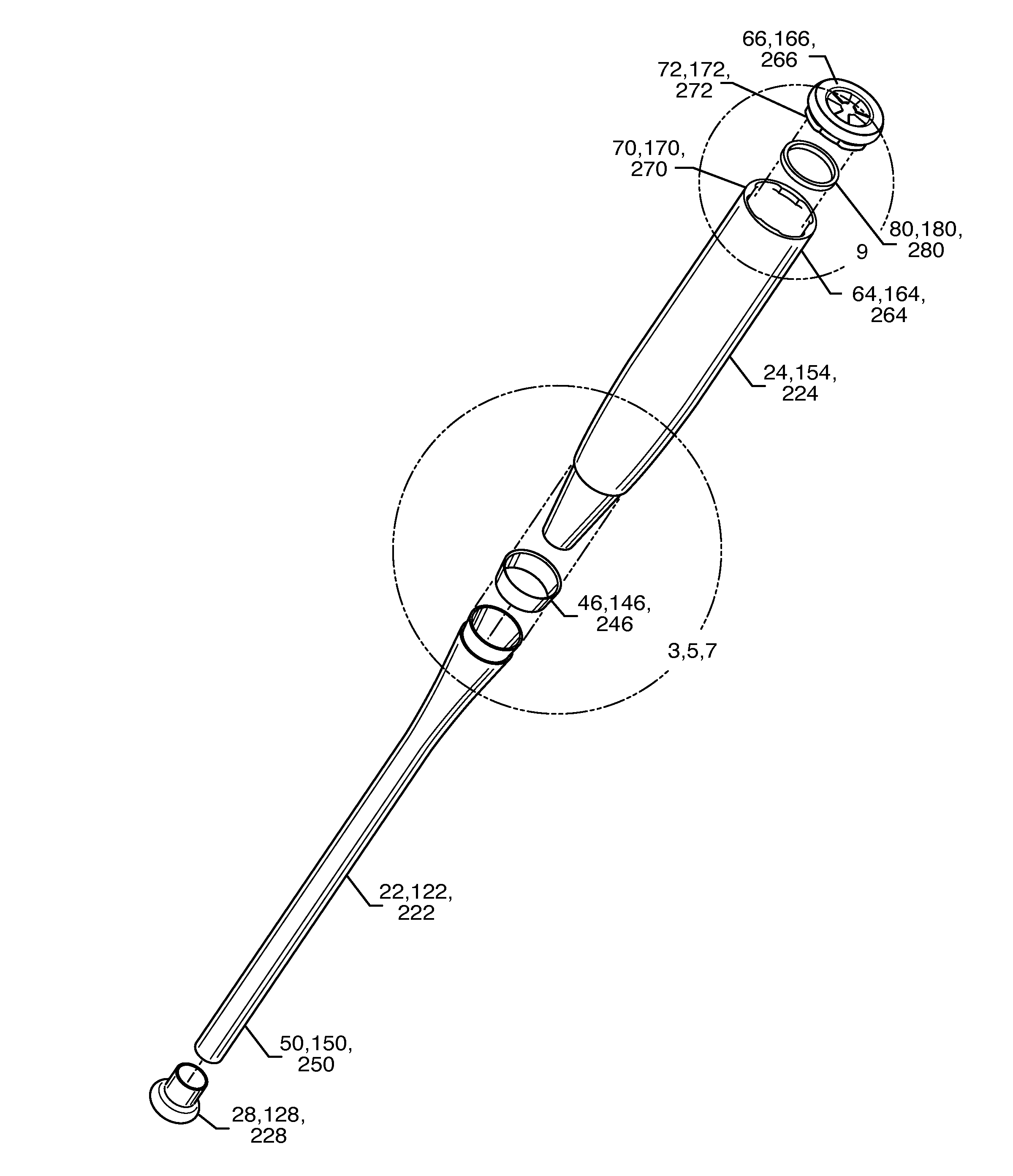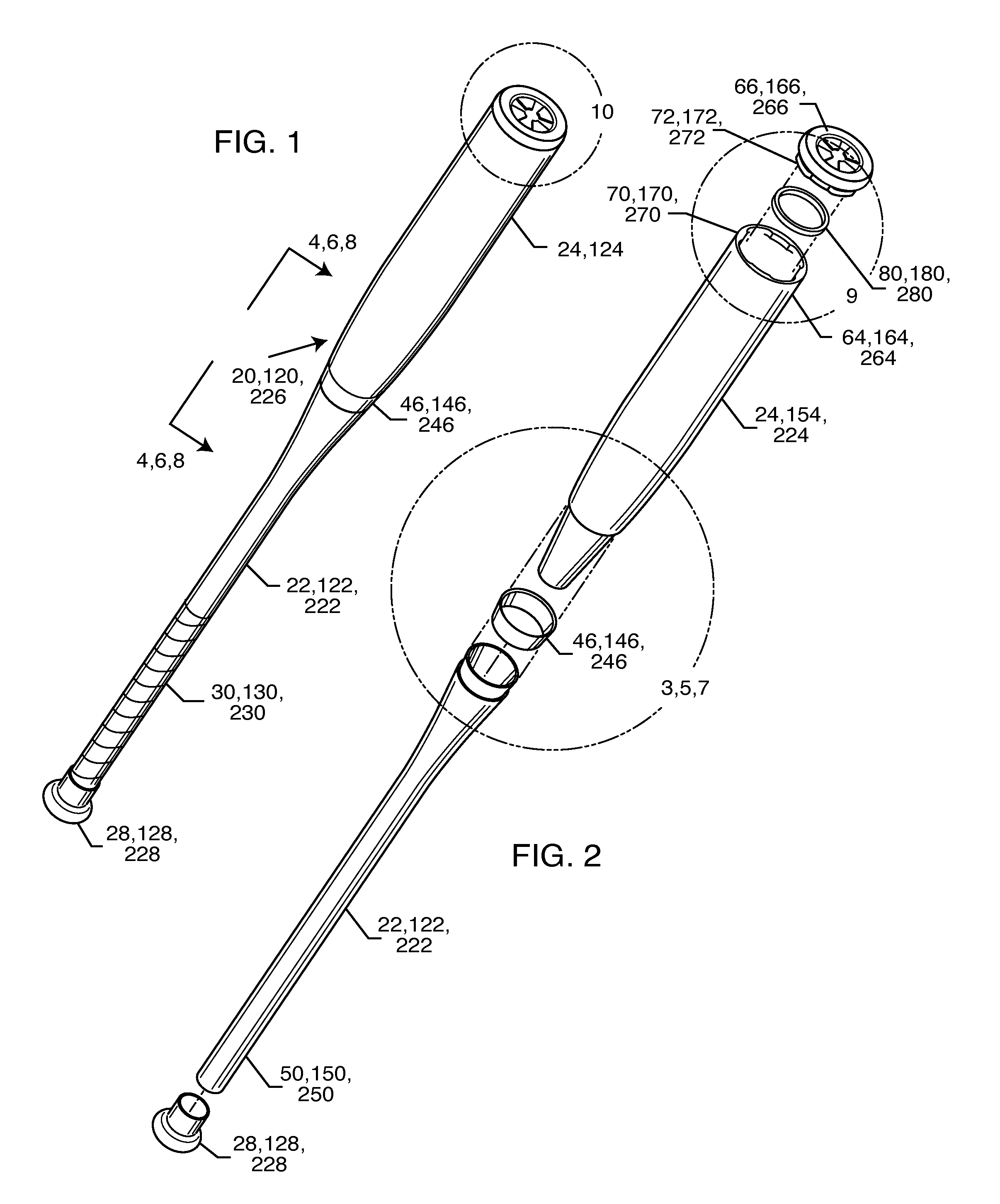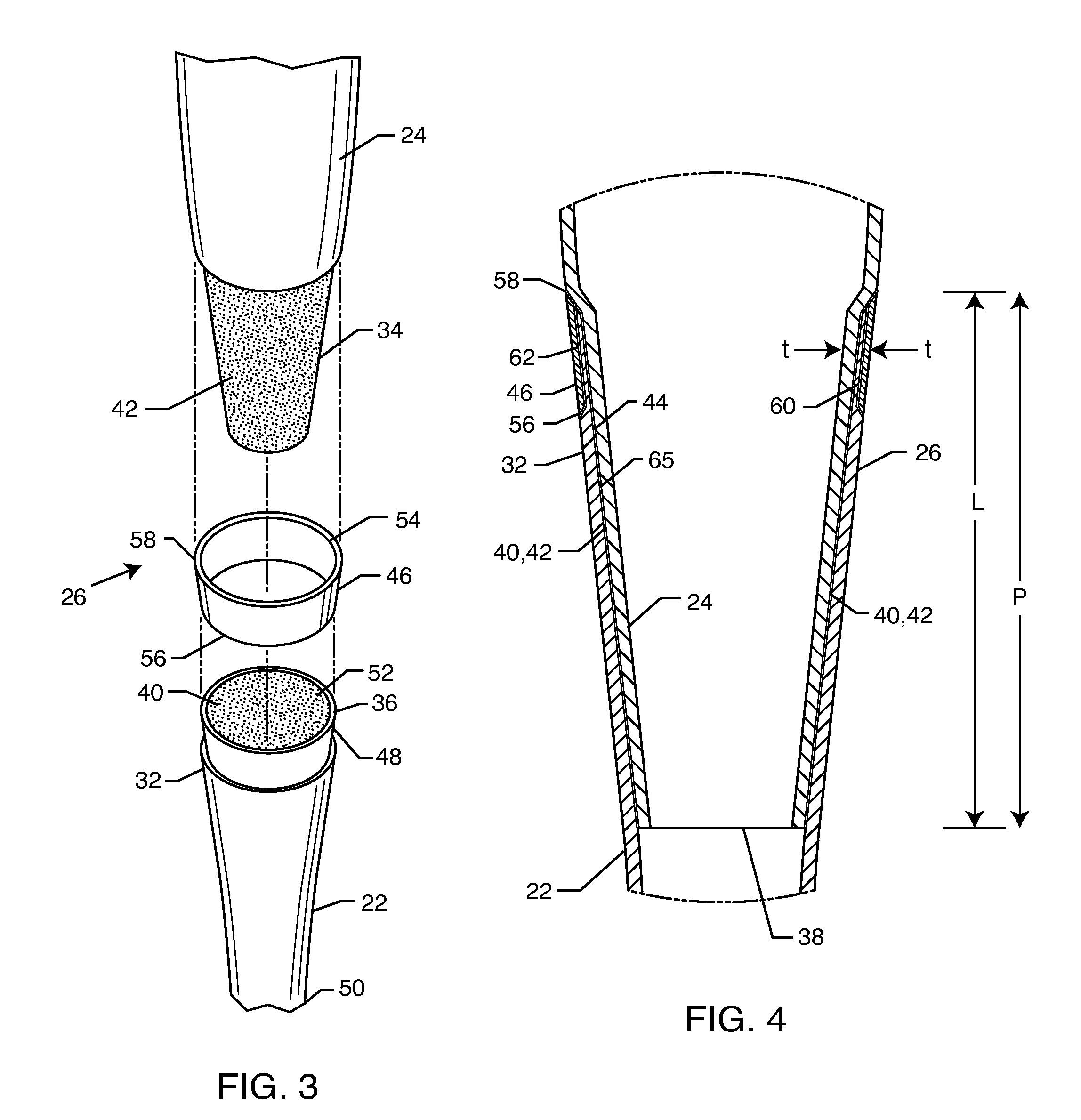Multi-component bat and assembly process
a multi-component, bat technology, applied in the field of baseball bats, can solve the problems of metal bats having certain disadvantages, metal bats vibrating, and longer hits
- Summary
- Abstract
- Description
- Claims
- Application Information
AI Technical Summary
Benefits of technology
Problems solved by technology
Method used
Image
Examples
Embodiment Construction
[0037]As shown in FIGS. 1-11 for purposes of illustration, the present invention is concerned with a multi-component bat 20, 70, 120 for use in baseball or softball.
[0038]In one embodiment of the present invention, as seen in FIGS. 1-4, and 9-11, the multi-component bat 20 has an elongate hollow handle shell portion 22, an elongate hollow barrel shell portion 24 and an intermediate cylindrically tapered section 26 interconnecting the handle portion 22 and the barrel portion 24. A knob 28 is securely attached to an end of the handle portion 22 by a variety of means including, without limitation, bonding agents, glues, adhesives or the like. The knob 28 may be made of various materials including, without limitation, aluminum, magnesium, polyurethane, polycarbonate, a composite material, Zytel, Delrin, plastic or the like. Also, the handle portion 22 is typically wrapped with a grip 30 comprised of rubber, polyurethane, leather or the like, for comfort. The construction of the intermed...
PUM
 Login to View More
Login to View More Abstract
Description
Claims
Application Information
 Login to View More
Login to View More - R&D
- Intellectual Property
- Life Sciences
- Materials
- Tech Scout
- Unparalleled Data Quality
- Higher Quality Content
- 60% Fewer Hallucinations
Browse by: Latest US Patents, China's latest patents, Technical Efficacy Thesaurus, Application Domain, Technology Topic, Popular Technical Reports.
© 2025 PatSnap. All rights reserved.Legal|Privacy policy|Modern Slavery Act Transparency Statement|Sitemap|About US| Contact US: help@patsnap.com



